How can I detect AC 'reverse polarity' (single phase) (without the use of ground/earth) and drive a led when the polarity is reversed?
It should at least detect 230 VAC but it would be cool/informative for future readers if the solution could work in US and EU (approximately 120 VAC to 250 VAC).
I did find this (non-isolated!) circuit, but I can not get it to simulate (the simulator complains that it needs ground or the LED blinks on both halves of the wave).

Source: 1 & 2
My questions are then:
- Is the above schematic really functional and how does it work?
- Is there a better or alternative way (MCU or perhaps even an IC) that does this?
Update:
Most current answers are leading me to believe one needs a reference. Now I'm thinking, why not create one? Something like a 'virtual ground' or somewhere along that line?
Update 2:
Today I read that older single-phase watt/hour-meters will run backwards if neutral and hot are reversed.. Why is this and couldn't the reason for this behavior be used in a 'equivalent circuit' that detects 'reverse polarity'?
Also, I wonder: could a hall-effect sensor be used to recognize a unloaded 'hot' wire, since a hot wire clearly emits a diversity of electromagnetic fields and elf radiation?

